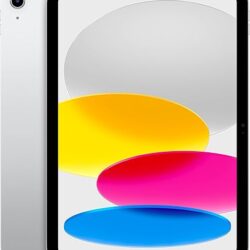四、使用联合词组时需要注意的问题 Points that merit special attention
(一)联合词组和句子成分 The coordinative phrase and sentence elements
 亚马逊导购
亚马逊导购  读新闻学外语
读新闻学外语  卑诗省当天新盘
卑诗省当天新盘
1. 联合词组可以直接充当句子成分,本身没有特别标记。 A coordinative phrase can serve as a sentence element without any particular marker.
- 联合词组是由哪类词构成的,就具有哪类词的某些特点和用途,可以叫做哪类词性的联合词组。
A coordinative phrase is characterized and functions according to its constituents, therefore we can name a coordinative phrase after the names of its constituents’ parts of speech.
(1) 各类实词构成的联合词组都可以做主语、宾语和定语。
例如:
The notional coordinative phrase can function as subject, object or attributive. For example:
媒和石油都是燃料。
(名词性联合词组做主语)(a nominal coordinative phrase as the subject)
我喜欢猫和狗。
(名词性联合词组做宾语)(a nominal coordinative phrase as the object)
她是一个又聪明又漂亮的姑娘。
(形容词性联合词组做定语)( an adjectival coordinative phrase as the attributive)
(2) 动词性和形容词性的联合词组还可以做谓语和状语。例如:
Verbal and adjectival coordinative phrases can also function as predicate or adverbial adjunct. For example:
大家又鼓掌又欢呼。
(动词性联合词组做谓语)(a verbal coordinative phrases as the predicate)
我悲痛而遗憾地离开了那儿。
(形容词性联合词组做状语)(an adjectival coordinative phrase as an adverbial adjunct)
(3) 形容词性(或动词性)联合词组还能做程度补语。例如:
Adverbial or verbal coordinative phrases can also serve as a complement of degree. For example:
他介绍得很简单、全面。
我们谈得又亲切又热烈。
她高兴得又唱又跳。
(二) 联合词组和结构助词
The coordinative phrase and structural particles
1.联合词组做定语时,要用助词“的”。例如:
When a coordinative phrase functions as the attributive, the structural particle should be used. For example:
我和他的友谊很深。
听、说的能力都应该提高。
- 动词性或形容词性的联合词组做状语时,要用助词“地”。例如:
When a verbal or adjectival coordinative phrase serves as an adverbial adjunct, the structural particle should be used. For example:
我美慕、钦佩地看着他。
他迅速而细心地检查机器。
有时联合词组内两个形容词后边各带一个助词“地”。例如:
In some cases, each of the adjectives is followed by . For example:
他们强烈地愤怒地抗议这种残酷行动。
那个病人吃力地痛苦地躺在病床上。 - 形容词性联合词组做补语时,联合词组与中心语之间一定要用助词“得”。例如:
When the adjectival coordinative phrase is used as the complement ( of degree), the structural particle 得 should be used. For example:
我们完成得又快又好。
他跑得又累又渴。
(三)不用虚词连接的联合词组常用顿号“、”表示词和词之间的联合关系。例如:
The pause mark (,) can be substituted for the conjunction to express the coordination of the constituents of a coordinative phrase. For example:
伯父、伯母都很爱我。
我们下午复习、预习。
他热情、友好地向我们招手。
(四)三个或三个以上的词联合时,连词用在最后一个词前边。例如:
When there are three or more constituents in the coordinative phrase, the conjunction precedes the last one. For example:
哥哥、姐姐和我都在北京上学。
桌子上有笔、墨水、纸和尺子。
(五)一般来说,联合词组中两个词的前后次序改变后意思不变;但有些词组根据意义或习惯说法,词序比较固定。例如:
Generally speaking, the order of the two constituents is reversible, but if the phrase is an idiomatic expression or one where the reversion is: not permitted in terms of meaning, the order is fixed. For example:
桌子椅子(很少说“椅子桌子”。)( One seldom says .)
爸爸妈妈(很少说“妈妈爸爸”。)( One seldom says a )
讨论并修改(指先讨论后修改。)( Discussion usually precedes revision. )
(六)联合词组前边有定语时,定语后边要用结构助词“的”。例如:
The structural particle must be used after the premodifying attributive of a coordinative phrase. For example:
这个孩子的父亲母亲都是医生。
我的老师和同学都在这儿。
他穿着黑色的上衣和裤子。
这是讨论的题目和文章。
(七)形容词性联合词组前边有副词状语时,状语后边不用助词“地”。例如:
The structural particle is not used after the premodifying adverbial adjunct of an adjectival coordinative phrase. For example:
他十分勇敢、坚定。
我实在又饿又困。
(八)动词性联合词组后边可以带一个宾语。例如:
A verbal coordinative phrase can take an object after it. For example:
我们下午收拾布置那个房间。
如果联合词组后边还有动态助词“了”,宾语要放在“了”后边。例如:
The object follows the aspectual particle T which is suffixed to the coordinative phrase. For example:
我们已经收拾布置了那个房间。
动词性联合词组后边还可以带各种补语。例如:
A verbal coordinative phrase can also be followed by a complement of any kind. For example:
他们已经收拾布置好了那个房间。(结果补语)( complement of result)
他们收拾布置得很好。(程度补语,用“得”)( complement of degree with 得)
我们讨论修改了两次。(数量补语)( complement of frequency)








